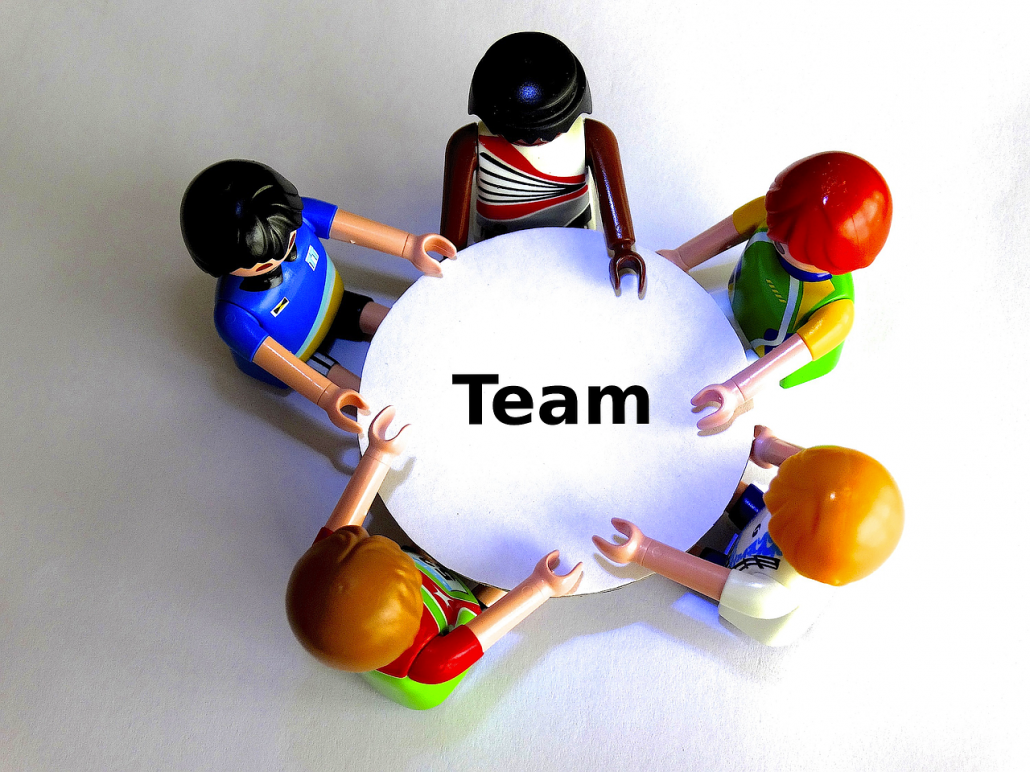
For more than three years, FirstRain has been delivering big data insights to our Fortune 500 customers through the power of the Salesforce’s Sales Cloud. Today, we are excited to announce an expanded partnership with Salesforce and an upgraded version of FirstRain Customer Insights on their AppExchange.
The more than ten thousand FirstRain enterprise sales and marketing customers that access our service through Sales Cloud will now enjoy an even richer and more deeply embedded customer intelligence experience within salesforce.com. And the deepened relationship between our two companies means enterprise sales and marketing professionals can more effectively tap into the power of social and mobile cloud technologies to accelerate their businesses.
Our expansion into the AppExchange will not force our users to learn a new way of working; FirstRain’s Customer Insights are streamed and embedded directly into the salesforce client to help drive revenue by making every salesperson as informed as your top 10% achievers.
We’ll be showcasing the newly expanded Customer Insights solution at Dreamforce 2013, November 18-21, in San Francisco, California. See you there!

By Nora Weintraub
One of the latest buzzwords for sales and marketing is “the buyer’s journey,” which makes it sound like your customers are going through an epic voyage to purchase your product or service. Without customer intelligence as a backup, it’s difficult to identify the exact steps along a prospect’s path. If your company sells products to other businesses, the journey gets even more convoluted and tangled along the way. Knowing your customers can give you a better understanding of their pain points, how they found your products and what it will take to convince them to make a purchase.
If you ask a chief marketing officer about the buyer’s journey, he or she may have a very different opinion than the customers themselves. And because most people rely on Internet searches to find product information, the buyer’s journey usually begins from an online platform. The average CMO only manages to get a 5 percent email click-through rate, meaning most of these executives fail 95 percent of the time when trying to connect with their prospects during the journey, according to a column by Mathew Sweezey in ClickZ. There’s a definite disconnect between many of the best planned marketing campaigns and what customers are actually doing.
Buyer’s journey is more direct and has fewer stops than marketers think
Yes, it’s true that customers have more ways to reach your sales team and more sources of information on products and services than ever before. But in Sweezey’s research of B2B buyers, he found that the average client only does a few Google searches before making a decision. Although some people start out by asking their peers for recommendations, they will still consult the Internet at some point during their journey.
Many marketers know they need to provide different types of content for buyers in varying stages of the voyage, but some may not realize that the majority of customers prefer shorter reading material. Most prefer a length of under five pages. Companies need to understand what types of information are most relevant to their customers based on the stages of the buyer’s journey.
Shorter trip doesn’t mean you can get lazy with marketing
Although your customers are using the Internet to a higher degree to navigate the road to making a purchase, you need actionable insights to help them along the way. While you may employ a variety of marketing techniques, the end goal is the same: to get to know your clients and form a relationship, Jason Thibeault wrote in an article for Econsultancy. Your organization won’t be able to adequately meet your customers’ needs unless you have a deep understanding of their pain points and create appropriate marketing materials. The Internet has given companies far more ways to market and sell their products, but the basics are the same—personal connections still matter in the digital age.
But that doesn’t mean you can’t leverage customer analytics to form a better picture of your client base. Although the basic point of marketing is always the same, knowing where customers are in the buyers’ journey and how they got there is important to build on the relationship. Marketers that take advantage of chances to make personal connections with their prospects may be able to increase the odds of converting the lead into a sale. Even if the Internet has sped up the trip from prospect to customer, people still want to have a conversation.
The journey may be essentially the same, but everyone is different and may have different communication preferences. The better you know your customers, the more appropriately you can communicate with them, making the whole sales process easier.

Dreamforce just keeps getting closer, doesn’t it? And the closer it gets, the more things get added to its agenda. Do you know what sessions you’re going to attend yet… or maybe you’ve started by picking your “extra-curricular activities” first (don’t worry, we won’t judge).
To help you get started, here’s a list of sessions, people and activities we’re excited about!
1. The Dreamforce Tweet-Up: Monday, 11/18
Meet people that you’ve gotten to know in the Twittersphere—in real life! Hope you don’t get catfished.
2. Breakout Session—AppExchange Fast & Furious: 30 Apps in 30 Minutes
Who doesn’t want to be on the cutting edge? SFDC will be showcasing some of the latest and greatest apps—we bet you’ll find one your company can use (we sure hope we will)! Maybe you’ll even find an idea to #appthat.
3. App Bash @ The Metreon: Wednesday, 11/20
Party your app off at the Dreamforce-sponsored party! It’s on the top floor of the Metreon, with amazing views of the city… and probably a lot of fun people. I also heard that DocuSign throws an awesome party, and they’re doing it again in 2013.
4. Volunteering: Monday-Wednesday in the Plaza
Do good this year at Dreamforce and give back to the community.
5. Breakout Session—Getting US Soccer Ready for the World Cup with Salesforce
We have a lot of soccer fans at FirstRain. We also have a lot of Salesforce fans. Perfect.
6. And anything Girly Geeks!
Did we mention we’re going to the Grace Hopper Celebration this year?
Women in Tech: Sunday, 11/17
Women in the Dev Zone: Tuesday, 11/19
Girly Geeks Do Good: see #4
If you’re going to any of these, let us know! We’d love to meet you (you can also stop by Booth #N1924). And if you have others to suggest, tweet us @FirstRain. We already know Alec Baldwin will be there

We are extremely excited to announce that our intrepid CEO, Penny Herscher, will lead a panel discussion about on the role of women in technological advancements in manufacturing at the Grace Hopper Celebration of Women in Computing.
The Grace Hopper Conference is nearly 20 years old, and is the largest technical conference for women in the world. It’s designed to support and showcase the contributions of women in computing. Conference presenters are leaders in their respective fields, representing industry, academia and government. Since promoting women in the technology is a cause that is near and dear to Penny (she’s even on the board of the Anita Borg Foundation, the organizers of GHC), we are incredibly excited to attend.
Our Panel: “The New Industrial Revolution: How Advanced Manufacturing is Creating Disruptive Opportunities for Women.”
This panel will discuss and explore the effects of exciting new technologies—from 3D printing to desktop design and fabrication—that have the potential to enable a new generation of female entrepreneurs. The panel will explore how these innovations have already begun changing the world of inventing and manufacturing, impacting the evolution and democratization of global manufacturing and defining the new role these technologies can play in the economic empowerment of women. Penny will be joined by Christine Furstoss (GE), Jennifer Lawton (MakerBot) and Kristen Turner (Ponoko).
If you’re going (and/or if this topic interests you), let us know by tweeting us at @FirstRain or write on our Facebook wall!
Conference and presentation details:
Who:
Penny Herscher, FirstRain CEO with Christine Furstoss, Jenny Lawton and Kristen Turner
Where:
Minneapolis Convention Center (MCC), Room 200 D-G
When:
3:45 – 4:45 pm on Thursday, October 3, 2013

By Ryan Warren, Vice President of Marketing
Your sales team is the backbone of your organization. In some cases, sales productivity can improve with training programs, but people who are innately good at selling often have specific traits. As a manager, you need to maximize your team’s capabilities to improve sales productivity.
Characteristics of highly successful salespeople
Even though many people choose to make a career in sales, some have the personality characteristics that make them great at what they do and some don’t. According to an Inc. magazine article by Geoffrey James, the best salespeople are assertive, self-aware, empathetic and excellent problem-solvers. As sales becomes more customer-centric, emotionally intelligent sales reps will become more valued.
Passive salespeople won’t be able to close deals and aggressive reps could scare away potential clients by being too pushy. Being assertive is the happy medium, and reps with this quality may be able to take better advantage of sales opportunities. Empathy is also critical for a top performer because your employees need to be able to understand what your clients are experiencing, such as their unique needs and pain points. And problem solving capabilities can’t be taught. Your sales team can’t rush in and try to solve a problem for a customer before they really know what it is. Great salespeople can help their customers see how things will be in the future once they have solved their current issues.
Hiring for your company’s sales culture
Just because a candidate has an impressive resume with previous selling experience doesn’t necessarily mean he or she is a good fit for your organization. Depending on your industry and customers, the sales cycle may be different and the average deal could vary. Beyond these characteristics, the candidate may be used to a different corporate culture or target audience, according to an article in Forbes by Ken Sundheim. Especially for more complex B2B sales cycles, getting the right person in the position is important. Being good at selling is more than just knowing how to find business opportunities. Reps need to be able to understand their customers to sell effectively.
In some cases, you may be able to determine whether a potential new hire has the right stuff by asking certain questions in the initial interview. You can ask him or her to give a sample pitch, about the relationships they maintained with loyal customers and creative ways they have pursued leads to determine if the candidate would be a good fit at your company.
Giving your salespeople the right tools helps them succeed in various circumstances
Although some reps are bound to be better at selling than others—whether they are more competitive, better problem-solvers, more understanding or what have you—your sales team needs to have the right tools to succeed. In an infographic for Salesforce, Kevin Micalizzi reported that 95 percent of sales reps don’t even understand their employers’ strategies. If you expect your team to maintain personal relationships with your clients and they have no idea about their business, are your reps coming through? It can take a while for an employee to become fully productive, so sales managers need to start training early.
As companies become more customer-centric, it will be more important to hire and develop sales reps that know your customers and can maximize productivity. Organizations that boast a large number of engaged employees can grow profits faster than those that don’t. With the right tools, your team can take advantage of every sales opportunity.

By Ryan Warren, Vice President of Marketing
When it comes to selling, some employees either have it or they don’t. Top performers obviously have the best results, but in many cases, they can still improve sales productivity. Hiring the right employees can help any business stay profitable, but even the most highly motivated workers need to be given the right tools to succeed, especially when it comes to your sales staff. The best employees essentially pay for themselves because they deliver value to your organization. While hiring good people is a sufficient start to maximizing sales productivity, how can you motivate your team to deliver consistently great results?
Employees need goals, systems and processes to meet or exceed their sales quotas. No salesperson can achieve a maximum output in a poorly designed organization, according to an article by Matt Garrett in Entrepreneur. Even though top-performing sales people often go above and beyond the expectations, you may be able to encourage even more results with the right tools and processes. Here are some tips on maximizing employee performance to achieve sales optimization:
1. Tie company profit to each employee
In case you’re unsure, this can be a helpful way to determine your most profitable employees. Who has the highest sales figures? Highest revenue per sale? You can set minimum standards for quality and performance to measure who is doing the best, Garrett wrote. This kind of model can instill a healthy sense of competition among your sales team.
2. Take a blended approach to employee engagement
You can catch more flies with honey, but stay tough on employees for best sales numbers. Many studies have indicated that happy, engaged employees produce the best work. However, if you kill your team with kindness, your representatives may not achieve the sales you want, Jack Zenger and Joseph Folkman wrote in the Harvard Business Review. It’s probably no surprise that sales teams with an ineffective manager tend to be disgruntled and disinterested in producing their best work. The article identified two main types of leaders: drivers and enhancers. Drivers can establish high standards and get their teams to reach for seemingly unattainable goals. Enhancers function as role models and stay in touch with the issues and concerns of their teams. They give regular feedback to help their employees develop to their fullest potential. While some managers want to act as a pal to their employees, as a leader, you need to stand firm in your commitment to holding the team accountable for performance.
3. Set high standards for behavior
You can’t expect great results from your employees unless you’re asking them to do the right things, according to Garrett. The same code may not apply to every employee in the organization because you probably already have workers who meet their quotas month after month. You should only judge your team based on things within their control, such as the number of calls they make per day or the deals they close. Since sales is largely influenced by incentives, performance should be appropriately tied to compensation for extra motivation.
You’re only as good as your salespeople
While you may have a great team of sales employees, your revenue productivity is tied directly to the performance of these workers. Although great managers and the right standards and incentives can motivate your team, they need the right tools in place to close deals and maximize productivity. Reassessing procedures and providing additional coaching can help, but sales reps also need to get a boost from technology to ensure they are following up with customers at the appropriate time.

It seems like Dreamforce ’12 took people by surprise. Refrains of “It’s massive!” popped up all. over. the web.
We obviously now know to expect that Dreamforce ’13 will be just as giant. But what else did we learn last year that will influence how we all exhibit this year?
Side note: if you consider yourself a FirstRain competitor, please ignore this post. In fact, please do the opposite.
1. A successful business is a social business
I bet that if, for some reason, your company hadn’t embraced social media last year, that was the first thing you did when you got back from Dreamforce. How could you not, especially after Sir Richard Branson called you out on it? “For a business to not embrace social media … you’ve clearly got your head in the sand.”
Being on social media not only gives you an easy channel to engage more and different people, it allows you to really connect with people on a more personal level. Nowadays, people appreciate seeing the human side of corporations—and the corporations realized that at DF12.
This year, I expect WAY more traffic on Twitter (and Facebook, and LinkedIn…) and an effort to be more personable and, dare I say, casual—and, hopefully, some very cool ideas coming out of it.
Which happens to segue nicely to my next point:
2. If you want to stand out, you need to get creative
Dreamforce is huge. We’ve established this. So what can you do to make sure to get foot traffic at your booth, which is a tiny (but I’m sure very lovely) island in the Moscone Sea?
We just talked about how people like to see the clever, human side to a business. So if you want to get noticed, you need to get creative with how you promote your company in the run-up to Dreamforce. Recognizing this, for the second year in a row, we at FirstRain have made a Dreamforce-themed video, which is getting a lot of love, and a funny Dreamforce-themed Tumblr (check them out—you won’t be sorry!). We’ve seen other creative videos and Tweets pop up here and there, too (and we love it!).
Make sure you have the material to impress once people want to know more—but getting people to know your name in the first place is half the battle.
3. There are more apps out there than anyone knows what to do with
My prediction: at Dreamforce ’13, there will still be more apps than anyone knows what to do with. And there might be even more than that. Because people have now seen that being able to provide a quick and easy solution to any sort of business need, isn’t just nice—it’s what people expect. Oh, and if they don’t currently have your solution, the only way they’ll consider buying it is if it’s compatible with the solutions they already do use.
Expect to see an explosion of integration at this year’s Dreamforce. Have we mentioned that FirstRain can be dropped in to just about any CRM or corporate platform? And it’s mobile, which is also necessary.
Come visit us at booth #N1924! We promise to have cool swag (free lesson #4).

Love the Cups song? Love Dreamforce? So do we.

By Nora Weintraub
You’ve probably already been hearing (and getting excited!) about salesforce.com’s upcoming Dreamforce 2013 conference. The theme this year is “Join the Customer Company Revolution”—but what does that actually mean? To get everyone ready for the largest vendor-led tech conference, salesforce.com has been streaming live conversations with experts about the conference, but before you head to San Francisco in November, you must understand the key aspects of customer companies.
A customer company is completely obsessed with its clients and able to collaborate with them to create a strong brand. By being centered on its customer, the company develops a bond with them based on trust. How can your company do all of this? Now, we’re not going to give away all the insider secrets before Dreamforce, but here’s a few tips to help you become customer-obsessed, customer-collaborative and customer-trusted to truly start understanding your customers before the conference.
1. Customer-Obsessed
If you’re not 100% committed to your customer, what’re you left with? Most likely, a struggling business that just can’t find its market niche—and is suffering for it. Being a customer company means being completely infatuated with your client. This means constantly researching your customers to stay up to date on their business lines, what’s going on in their market and what their customers need. Being customer-obsessed requires your constant focus on providing your customer with the best experience with your company possible.
Doing this doesn’t have to be too difficult. Your company can realign its mission to officially make the business customer-centered and gather customer insights to get started. According to Customer Care News, your company can follow the likes of Apple and Starbucks to become an “experience maker.” Every time you connect with a customer, your company can be focused on creating a great experience.
2. Customer-Collaborative
Part of developing a wonderful customer experience is making sure your customer is able to tell you their opinion or concerns so you have the information to improve the experience. According to the blog Get Satisfaction, customer companies are able to turn negative interactions into positive ones by showing that the company truly understands the customer’s needs and is ready to work on providing them with solutions. This is where customer insights become vital—if you don’t have the knowledge to create that intelligent conversation with the customer, you can’t sell your solution or product. Customers want to feel as if you understand their concerns and can listen to their questions. If your company doesn’t use their feedback—or, even worse, doesn’t value it—your customers may not feel they can trust you.
3. Customer-Trusted
The marketplace is more competitive than ever before, so your business needs to create a positive relationship with your customer to keep their business. Yet you can’t gain your client’s trust if you don’t know them and aren’t able to create an intelligent conversation. It’s because of this growing need to truly understand your customers that the customer company revolution began in the first place. Building trust requires a strong foundation that only customer-focused companies can provide.
Being a customer-centered business is vital to keeping your top enterprise accounts. If you’re not invested in your customer, they won’t invest in you. Creating a lasting relationship with your customers and driving your revenue stream is based on discovering how your company can become customer-focused. Dreamforce 2013 will give you countless ways to do just that, but it all starts with making a commitment to being obsessed with your customer and all of their needs.

By Ryan Warren, Vice President of Marketing
The yearly sales marathon is more than halfway done, so it’s that time of year when you may need to ramp up your sales productivity to hit end-of-the-year projections. Some reps are superstars at this; they’re able to push themselves all the way to the end-of-the-year finish line. Their secret? They’re in shape. They’re able to pace themselves throughout the year and gather sales intelligence early. Now, don’t think you can’t catch up—you can. The trick is to get out of your comfort zone, mentally zero in on your target and push yourself until the end of the year.
So here they are—five steps you can use to push yourself to hit your sales targets:
1. Determine What’s Holding You Back
There can be any number of things that are stopping your productivity. Is there one client that just won’t budge? Is your go-to sales approach just not working anymore? Identifying all your challenges can give you insight on your own sales productivity and help you realize the odds you’re up against. Pushing through to the end of the year relies on you knowing these barriers.
2. Use the Right Tools
Some of these challenges can be due to not using the tools at your disposal—or not having them at all. If you’re unable to connect with your customers, it’s probably because you’re not collecting customer insights in an efficient way. When running a race, you don’t put on sandals—you grab that pair of running shoes that fit your feet like a glove. Using the correct tools properly is one of the only ways you’ll be able to stay productive in the time you have left.
3. Do a Little More—On a Frequent Basis
According to the blog Time Management Ninja, creating daily goals that are larger than the day before’s can be a great way to start pushing yourself. Time Management Ninja suggested just taking an extra five minutes every day to finish a task or concentrating on making one extra sale a week can ramp up your productivity. Think of it as building your momentum so that you’re not struggling in the final stretch.
4. Rest
We all get burned out, so taking some time to yourself can help you recharge and refocus. In a piece for Harvard Business Review, Tony Schwartz, president and CEO of The Energy Project, recommended building up your productivity through intervals. Just like running a marathon, you can only push yourself for so long when you’re just starting something new. Try taking a longer lunch break to relax for a while so you’re more efficient when you return.
5. Know You’re Better Than You Think
Superstars often reach their targets because they know they can. Confidence is key in sales, so if you don’t think pushing yourself is a possibility, think again. Recognize that you’re stronger than you think, and all you have to do is tap into that power. Getting out of your comfort zone and pushing yourself relies on understanding you can be a sales superstar if you want to. You just need to condition yourself to think that way.
So get moving! Push yourself to make those sales and reach your goals, otherwise you’ll be kicking yourself later in the year. Take a cue from your rock star colleagues and leave your comfort zone—you’ll thank yourself when you succeed. It may seem cliché, but you can do it!
